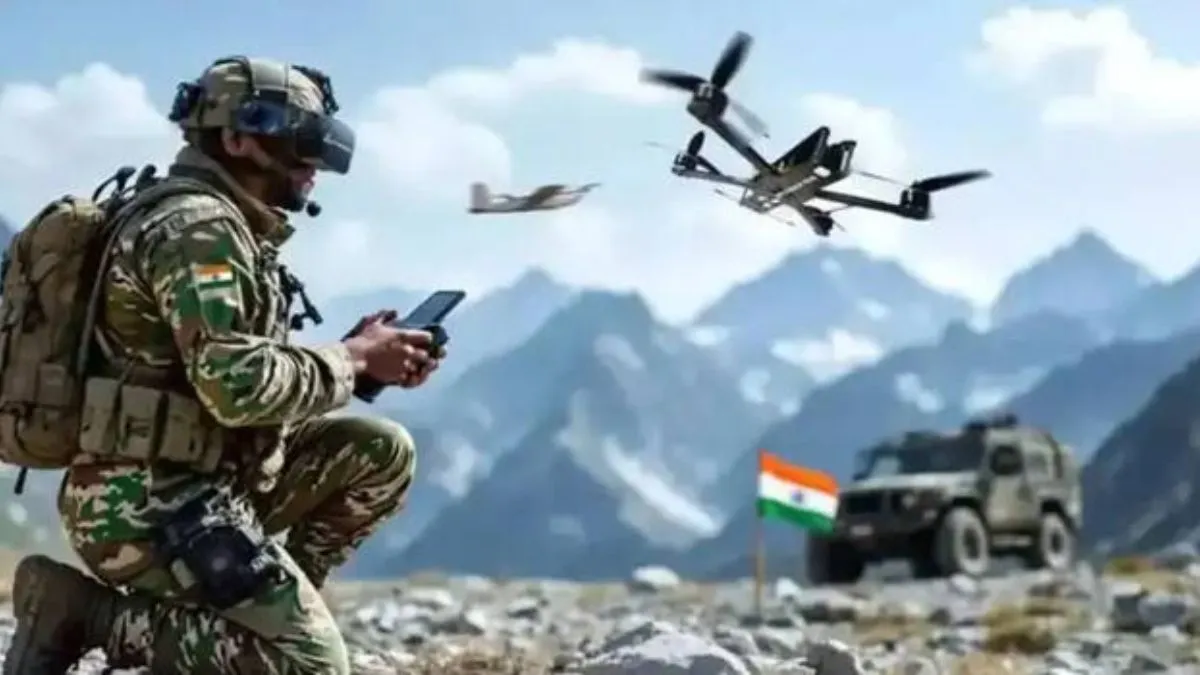- By Chetna Shree
- Thu, 09 Oct 2025 09:01 PM (IST)
- Source:JND
In a major boost to the Indian Army’s airspace management capabilities, the indigenous ‘SAKSHAM’ Counter Unmanned Aerial System (UAS) Grid is being procured to provide real-time detection, tracking, identification and neutralisation of enemy drones.
SAKSHAM (Situational Awareness for Kinetic Soft and Hard Kill Assets Management) represents a significant advancement in integrated airspace control, NDTV quoted army sources as saying.
The Indian Army has initiated the procurement of an indigenously developed ‘SAKSHAM’ Counter Unmanned Aerial System (UAS) Grid System. The system is designed to detect, track, identify, and neutralise hostile drones and unmanned aerial systems in real time, ensuring complete…
— ANI (@ANI) October 9, 2025
“The modern battlefield is no longer confined to the ground. Control of the Air Littoral - the airspace immediately above troops - is now critical to tactical dominance,” NDTV quoted an official as saying.
ALSO READ: 'Missile Caused Crash, Not...': Putin Admits Russian Forces Downed Azerbaijan Plane Killing 38
What Is SAKSHAM? Know Its Key Features
- The Indian Army, in collaboration with Bharat Electronics Limited (BEL), Ghaziabad, has developed an indigenous ‘SAKSHAM’ Counter Unmanned Aerial System (UAS) Grid.
- Situational Awareness for Kinetic Soft and Hard Kill Assets Management, or SAKSHAM, operates on the secure Army Data Network (ADN) and provides a unified “Recognised UAS Picture” across the Tactical Battlefield Space (TBS), extending up to 3,000 meters (10,000 feet) above ground.
- The concept of TBS was introduced following Operation Sindoor, India’s cross-border strike in response to the April 22 terror attack in Jammu and Kashmir’s Pahalgam, when increased drone incursions revealed the need for real-time space control.
- SAKSHAM uses AI-driven threat analysis to automate decision-making and improve accuracy in neutralising drone threats.
- SAKSHAM’s modular grid integrates various counter-drone weapons and sensors, combining data from radar, electro-optical devices, and other sources to provide immediate threat alerts and response capabilities.
- Upon deployment, SAKSHAM will form the backbone of India’s Counter-UAS network, offering commanders seamless situational awareness across land and air domains.
- “This is about more than drones - it's about autonomy, speed, and control of our battlespace,” a defence official said.
- The initiative aligns with the Indian Army’s Decade of Transformation (2023-2032), aimed at creating a digitally networked, technology-enabled force prepared for future hybrid warfare.
ALSO READ: Bihar Elections: NDA Seat Sharing Announcement In 1-2 Days, BJP's Candidates List To Follow
“The future battlefield is multidimensional - and SAKSHAM ensures India stays ahead of the threat curve,” an officer said.

